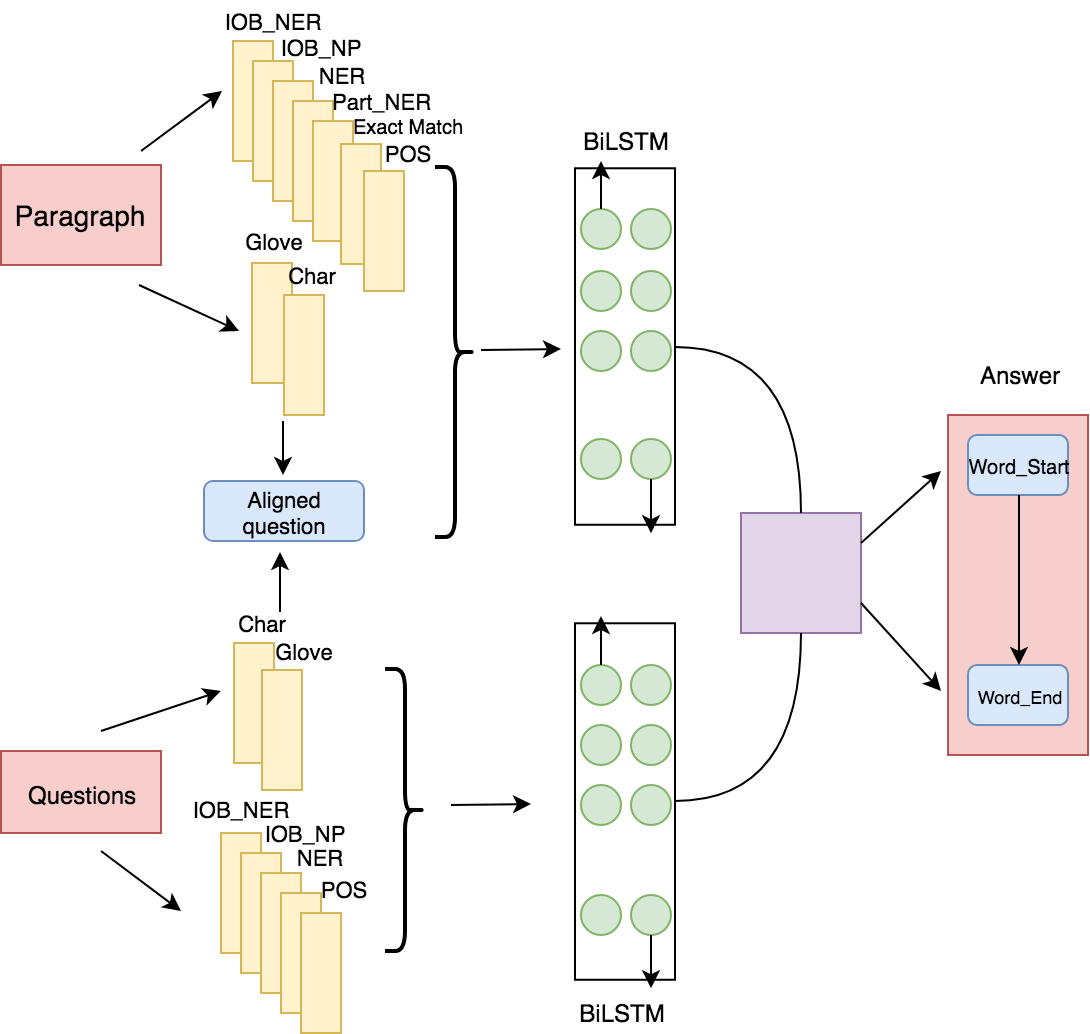[Paper]: Implementation based on ACL 2017 paper Reading Wikipedia to Answer Open-Domain Questions (DrQA).
[Code]: Our original code is adopted from https://github.com/hitvoice/DrQA.
We conduct our experiments on SQuAD. SQuAD is a reading comprehension benchmark.
- IOB-NER tagging
- IOB-NP tagging
- Part of NER tagging
Example of different tagging as shown in following figure. We mark S, I, and O to indicate beginning, middle, and outside of named entities or noun phrases on top of POS and NER tags. In this example, Microsoft Corporation is a named entity. We mark Microsoft as S_NER and Corporation as I_NER. For Part of NER tagging, corporation refers to Microsoft Corporation, thus is marked as P_NER.

As shown in following figure, by adding character level embedding, model performance shows improvement. After adding our novel embedding features IOB-NER, IOB-NP, and Part-NER, the model further improved. One interesting finding is that including these IOB features together increases model performance by 0.74%, but adding IOB-NP or IOB-NER alone increases EM score by only 0.04% and 0.12% respectively. After adding Part NER tagging, our best model (Model 8) is able to achieve F1 score at 78.64% and EM score at 69.47%. We also notice that adding question encoding does not contribute much to performance improvement.
- python 3.5
- pytorch 0.3
- numpy
- msgpack
- spacy 2.0
to download data and GloVe
bash download.shto download Pre-trained character-level vector
http://www.logos.t.u-tokyo.ac.jp/~hassy/publications/arxiv2016jmt/jmt_pre-trained_embeddings.tar.gz
# prepare the data
python src/prepro.py
# train for 40 epochs with batchsize 32
python src/main.py Xiaoyu Wang, Yidi Zhang, Yihui Wu, Xinsheng Zhang
Prof. Samuel R. Bowman

